An interview with Marco Zanuso, Jr.
Vantage Point
-
Architect-designer Marco Zanuso, Jr. in his Milan Home
Photo © Giada Paoloni for Pamono
-
Inside Zanuso's Milan home
Photo © Giada Paoloni for Pamono
-
Marco Zanuso, Jr. in his Milan Home
Photo © Giada Paoloni for Pamono
-
Inside Zanuso's Milan home
Photo © Giada Paoloni for Pamono
-
Brera Console by Marco Zanuso, Jr. for CoEdition Paris
Image © CoEdition Paris, courtesy of the designer
-
Brera Desk by Marco Zanuso, Jr. for CoEdition Paris
Image © CoEdition Paris, courtesy of the designer
-
Tamiso T1423 Round Low Table by Marco Zanuso, Jr.
Photo © Fragile Srl
-
Tamiso T1413 Round Low Table by Marco Zanuso, Jr.
Photo © Fragile Srl
-
Tamiso T1406 Squared Low Table by Marco Zanuso, Jr.
Photo © Fragile Srl
-
Natural Oak Dom Stool by Marcos Zanuso Jr.
Photo © Galerie Philia Design
-
Wood Baby Side Table by Marcos Zanuso Jr
Photo © Galerie Philia Design
-
Tamiso C1466 Wall-Mounted Console by Marco Zanuso Jr.
Photo © Fragile Srl
-
amiso C1431 Rotating Centerpiece by Marco Zanuso Jr.
Photo © Fragile Srl
Over the last five decades, architect-designer Marco Zanuso, Jr. has mapped out an intriguing, singular path within the design world. Born in Milan, he studied in Florence during the 1970s, focusing primarily on the then-recently erupted radical design movement and its key players, before going on to work with some of Italy’s greatest designers—including Enzo Mari, Achille Castiglioni, and his uncle, noted architect and designer Marco Zanuso, Senior. As such, his own work has been shaped by a unusual front row seat to two very distinct schools of design thought: radical design—a la the work of Andrea Branzi, Michele de Lucci, and Memphis—and the more mainstream, Italian “good design”—those designs seen as the pinnacle of good taste and elegance during the 1950s and ’60s, as in the work of the elder Zanuso and Castiglioni.
For Zanuso, Jr., these two threads are easily reconciled; he knows each tenet intimately, and there are moments in his work when elements from one or the other clearly shine through. Clients from both the gallery and commercial worlds regularly commission him for diverse projects—his resume includes work for the likes of De Padova, Driade, Fontana Arte, Cappellini, Galerie Italienne, Fragile Milano, and others—and he finds the range of outlets an endless source of inspiration.
We had the opportunity to visit with Zanuso in his cozy home in Milan’s exuberant Brera area. He is warm, astute, and straightforward. Nodding towards a window, he points out the view of the San Marco locks, part of the canal system designed by Leonardo da Vinci—and another reminder of the active, layered roles that Italian cultural history play in Zanuso’s unique worldview.
Read on for highlights from our conversation.
Anna Carnick: How would you describe the state of Italian design today?
Marco Zanuso, Jr.: I feel that that there is not much left of the original DNA. On the other hand, quality commercial design is very healthy. Some very interesting luxury objects are being produced. In my opinion the most interesting company that manages to combine contemporary design cultures is Flos. I also like Magis’ work very much.
It looks like the radical wave is almost over now. And "good design" has now got a very commercial trend. Some very good products are still around—for example Flos for light and Magis or Moroso for furniture—but, in general, there's less experimentation. Industrialists don't want to risk; most of the time they are afraid. Many of them don't even have design knowledge; they move forward just along marketing. Italian design's DNA is evanescent.
AC: How has your own work evolved over the years?
MZJ: At the beginning, in the first years of my activity, I used to do my best to widen as much as possible my potential target territory, looking for many contacts and working opportunities. Then I started to be more selective, trying to avoid false steps, choosing to focus only on projects and clients that I feel I can really work well with.
AC: You work both with longstanding companies and with galleries. How would you describe the similarities or differences in these types of work and relationships?
MZJ: When working with companies, the project starts with a strong conditioning; often the briefs are very precise. This is by no means a bad thing for me. Rather, it is a good premise to help one design. In the work commissioned by companies, therefore, the first step is to conceive the product together with the person in charge. In the best of the Italian design tradition, the owner himself played this role; Aurelio Zanotta, Maddalena De Padova, Enrico Astori, and many others took this on, for example.
Then, once my projects are approved, we get to the second step: a particular and detailed work with the technical office. I've always greatly enjoyed this second step, when it is possible to learn many aspects that no university or school can teach you.
AC: What’s the most important lesson (or two or three) you’ve learned over the years as a professional designer?
MZJ: I'll start by saying that I'm still learning and trying to improve. Each project provides an opportunity for growth, as invention and innovation are always needed. Whether it be a basic and elegant technical solution or an astonishing color scheme, there is always a discovery process. A good project implies creating something that didn’t exist before; this is the lesson I received from Marco Zanuso Senior, a master.
AC: What projects are you working on now? And what’s next for you?
MZJ: I’m collaborating with graphic designer Francesco Dondina and architect Giuseppe Raboni to create a sign language system for the green areas in Milan. This project is very important for me because I like to have the opportunity to make my own town a little more enjoyable and functional.
My partner Daniele Nava and I are completing two residential building projects in Milan as well. We've tried to balance tradition with new materials and technologies while designing buildings that felt comfortable to live in. The purpose was to create a good relationship between people and their environments.
On the design front, I'm working on lamp projects made of Murano glass, a collection of steel tables, ceramic home items, and wrought-iron table items. The last is new territory for me.
A book on my work in design is in progress, too, and should be ready by the end of the year.
AC: Are there any dream projects still out there for you?
MZJ: I'd like to make projects on an urban scale—not buildings but cityscape interventions, projects that improve public areas. There's a lot that still needs to be done in this sense. The Floating Piers by Christo at Lake Iseo is a great example: One million people went to visit last year and the area's economy is really benefitting from that event.
AC: What one piece of advice would you like to give young designers just starting out today?
MZJ: Certainly my advice is to have a practical experience for one year in a technical office, a workshop, or laboratory—places where the product is actually made. This is very useful. And don't waste your time on social media; go out and explore! Watch and observe as much as possible, and visit galleries and design exhibitions.
-
Interview by
-
Anna Carnick
Anna is Pamono’s Managing Editor. Her writing has appeared in several arts and culture publications, and she's edited over 20 books. Anna loves celebrating great artists, and seriously enjoys a good picnic.
-
-
Photos by
-
Giada Paoloni
Giada is an Italian-born photographer and stylist with a passion for travel, food, and art.
-
More to Love
Miami Side Table with Chromed Frame & White Lacquered Tray by Marco Zanuso Jr. for Adentro, 2016
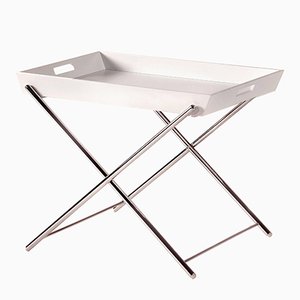
Italian Chrome Round Cocktail Bar Cart, 1970s

Cosimo Desk with White Mat Lacquer and Glass Top by Marco Zanuso Jr. for Adentro, 2017
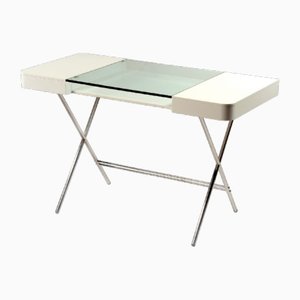
Freeman Trolley by Marco Zanuso Jr. for Driade
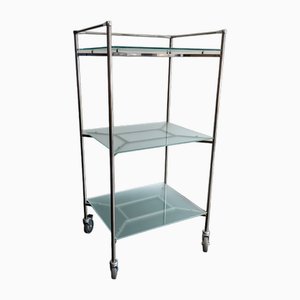
IKI Table with White Lacquered Base & Oak Veneer Top by Marco Zanuso Jr. for Adentro

Cosimo Desk with Orange Glossy Lacquered Top by Marco Zanuso Jr. for Adentro
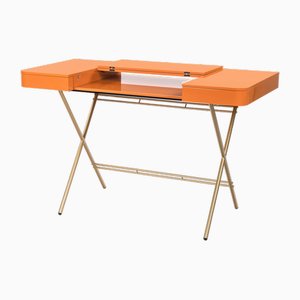
Cleopatra Side Table by Marco Zanuso Jr for Memphis Milano, 1990s
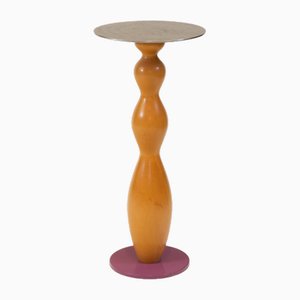
IKI Table with Red Lacquered Base & Oak Veneer Top by Marco Zanuso Jr. for Adentro

Cosimo Desk with Walnut Veneer Top by Marco Zanuso Jr. For Adentro, 2017
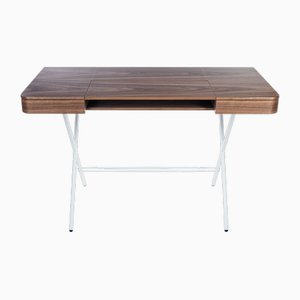
Fourline Armchair in Black Leather and Chrome Plated Metal by Marco Zanuso for Arflex, 1970s
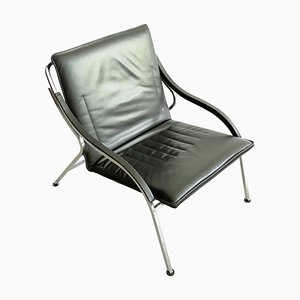














 Cleopatra Side Table by Marco Zanuso Jr for Memphis Milano, 1990s
Photo © Matt Crosby Antiques & Interiors
Cleopatra Side Table by Marco Zanuso Jr for Memphis Milano, 1990s
Photo © Matt Crosby Antiques & Interiors

